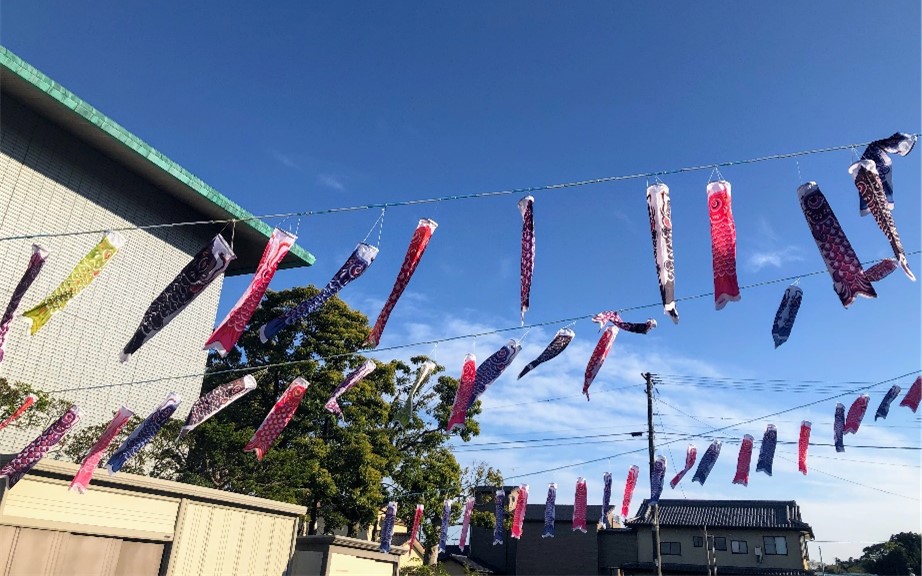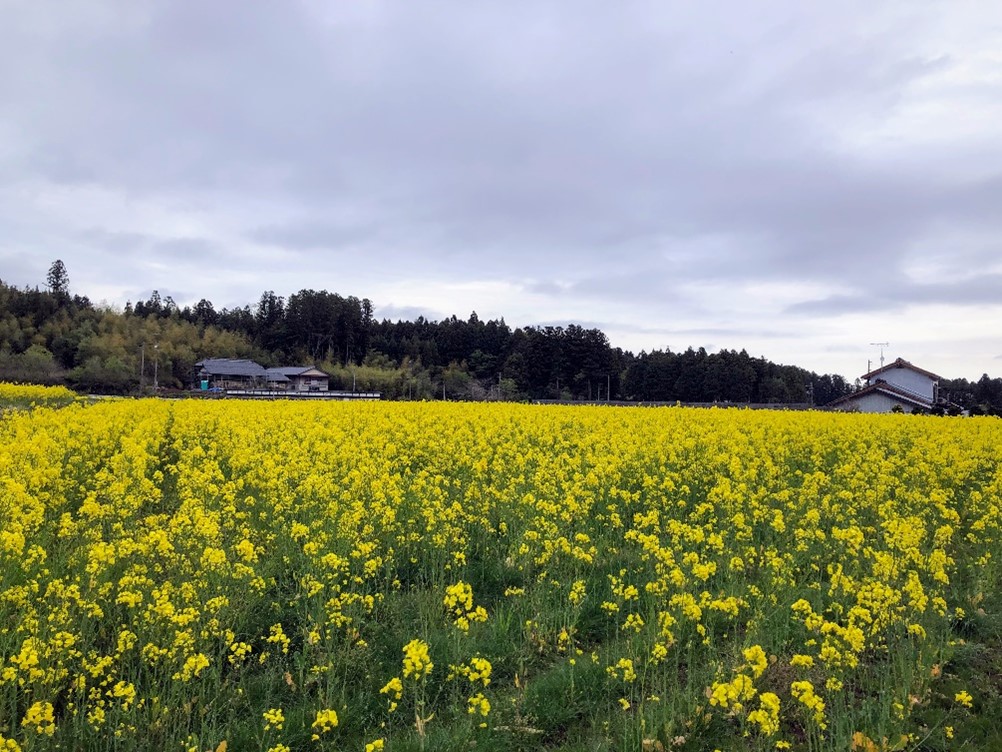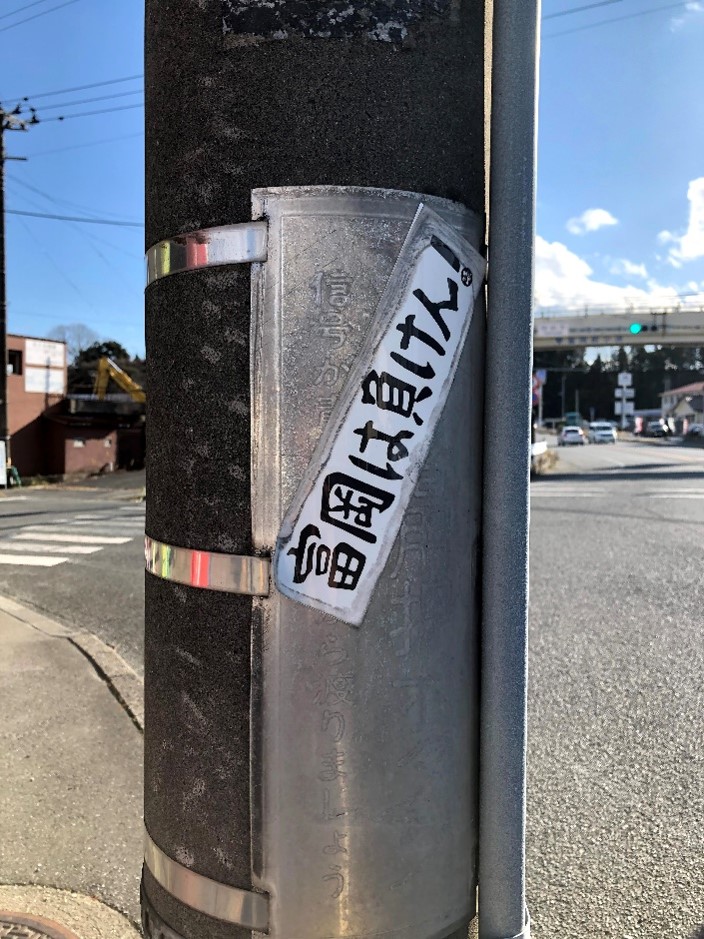by Lynn Ng
In April 2019, I made my first trip into Fukushima on a friend’s spontaneous invitation – a week-long trip I never imagined would turn into an MA, and now doctoral research project. On a late afternoon in end-April, I arrived at Odaka station and was greeted by the station master. “The winds sure are strong, right? Please take care,” he said as I handed him my ticket. Heeding his words, I cautiously pulled the doors open and stepped out of the station expecting “strong winds” but was met with nothing more than a mild breeze. With the station master’s strange warning stuck to my mind, I slowly made my way to the café where my friend would meet me.

Copyright © Lynn Ng 2019
At the quiet café, with all due social awkwardness, I’d blurted out “the winds sure are strong, huh?” to the café owner. The owner looked up, glanced in the direction of the station, and commented that, yes, the winds were indeed strong. A silent minute passed before he began a lengthy explanation of why the winds were strong: The lands beyond the station (towards the coast) used to be farmlands protected by windbreaks – the rows of trees that shelter the farms from coastal winds. After 3/11, the trees felled and unobstructed coastal winds now blow freely into the town.
As an environmental biologist, my first instinct then was to question this exaggerated range of windbreaks. Still, I held my tongue. Instead, I asked how he knew this information, and what it was like growing up in this area before the triple disaster. To my surprise, he was from urban Tokyo and had never been to Fukushima until 2016. And thus, my curiosities were piqued – what was an urbanite such as him doing in rural post-disaster Fukushima?
Later in the week, the café owner introduced me to his friend who offered to give me a tour around town. She drove me past rolling hills of sunflowers and canola, with wind turbines turning far in the background. She told me about the town’s plan to develop into Japan’s canola-town, since canola plants are sturdy and grow quickly, and thus can very efficiently absorb contaminants in the soil. I’d silently scoffed at her comment, not because of canola’s capabilities in decontaminating the soils, but because Japan’s canola-town is a crown already claimed by the town [1] in Hokkaido in which I lived for three years. In that brief moment, standing amongst the canola flowers in Odaka, I had felt immensely protective of the place I had called home.

Copyright © Lynn Ng 2019
Again, I kept my mouth shut. I instead redirected the conversation to anecdotes of the countryside. We joked about hazardous elderly drivers before she admitted that she missed having movie theaters nearby. I would from here on learn that she came here from metropolitan Nagoya. And from here, my curiosities spiraled out of control – What were urbanites such as her and the café owner doing in rural post-disaster Fukushima? Were there more of them? Are they an isolated bubble of I-turners? How integrated were they into the larger population? What else do they do here? Do they participate in the region’s revitalization programs? Out of all of Japan’s regions, why Fukushima?

Copyright © Lynn Ng 2020
Over the months after this trip, I developed these first questions into a full MA project. With every return trip I made to Fukushima, I met more I- and U-turners (or in Fukushima’s terms, F-turners [2]) and learned more narratives. I would learn that the complexity of Fukushima’s nuclear exclusion zones extends far beyond population movements and Becquerel-Sieverts, and traverses into domains of hope and belonging. Now as a doctoral candidate at GEAS in Berlin, I approach the phenomenon of urban-rural migration into Fukushima with the same curiosity, and cannot wait to dive in even deeper than before.
References
[1]
Takikawa has been home to Japan’s largest canola fields for seven straight years.Takikawa City (2021). Nanohana ni tsuite [About Canola]. Available at: https://www.city.takikawa.hokkaido.jp/230keizai/03kankourenkei/10menu/nanohana.html
[2]
“F-Turn” is Fukushima Prefecture’s project at promoting U-I-J turns into Fukushima. Fukushima Prefecture (2022). F-tān [F-Turn]. Available at: https://www.f-turn.jp/
